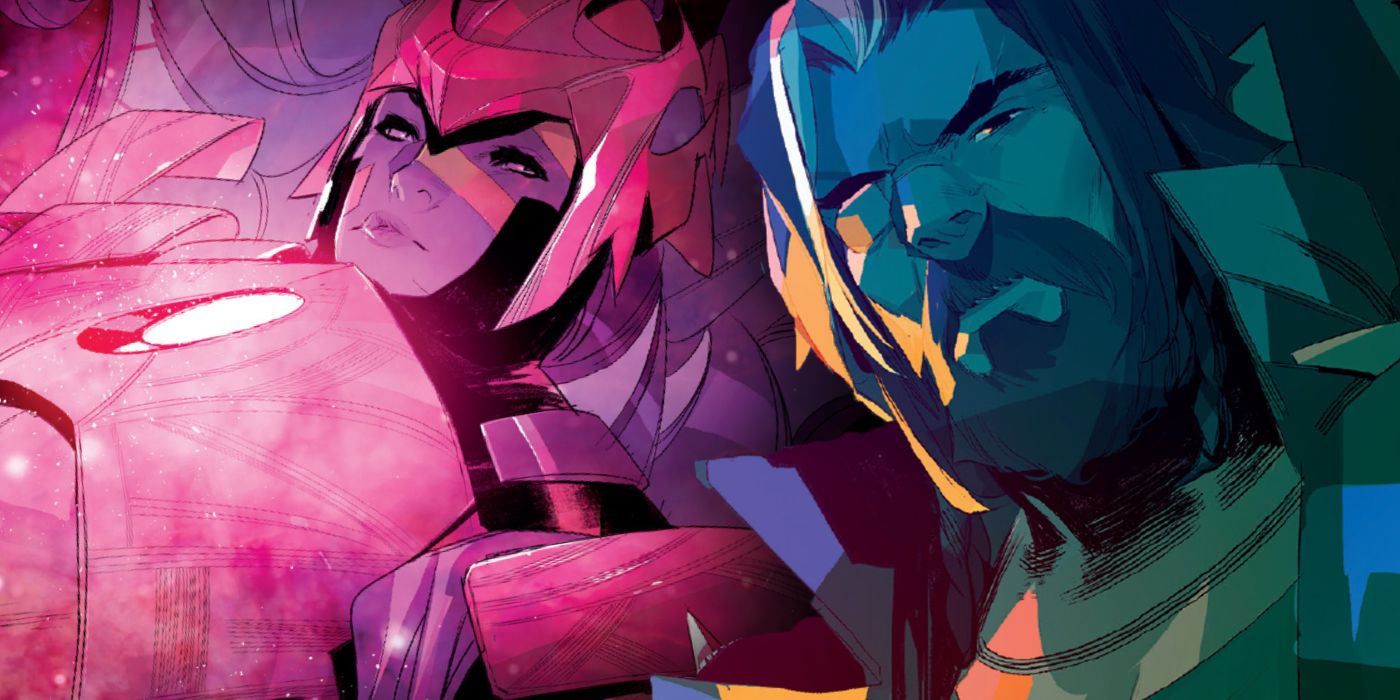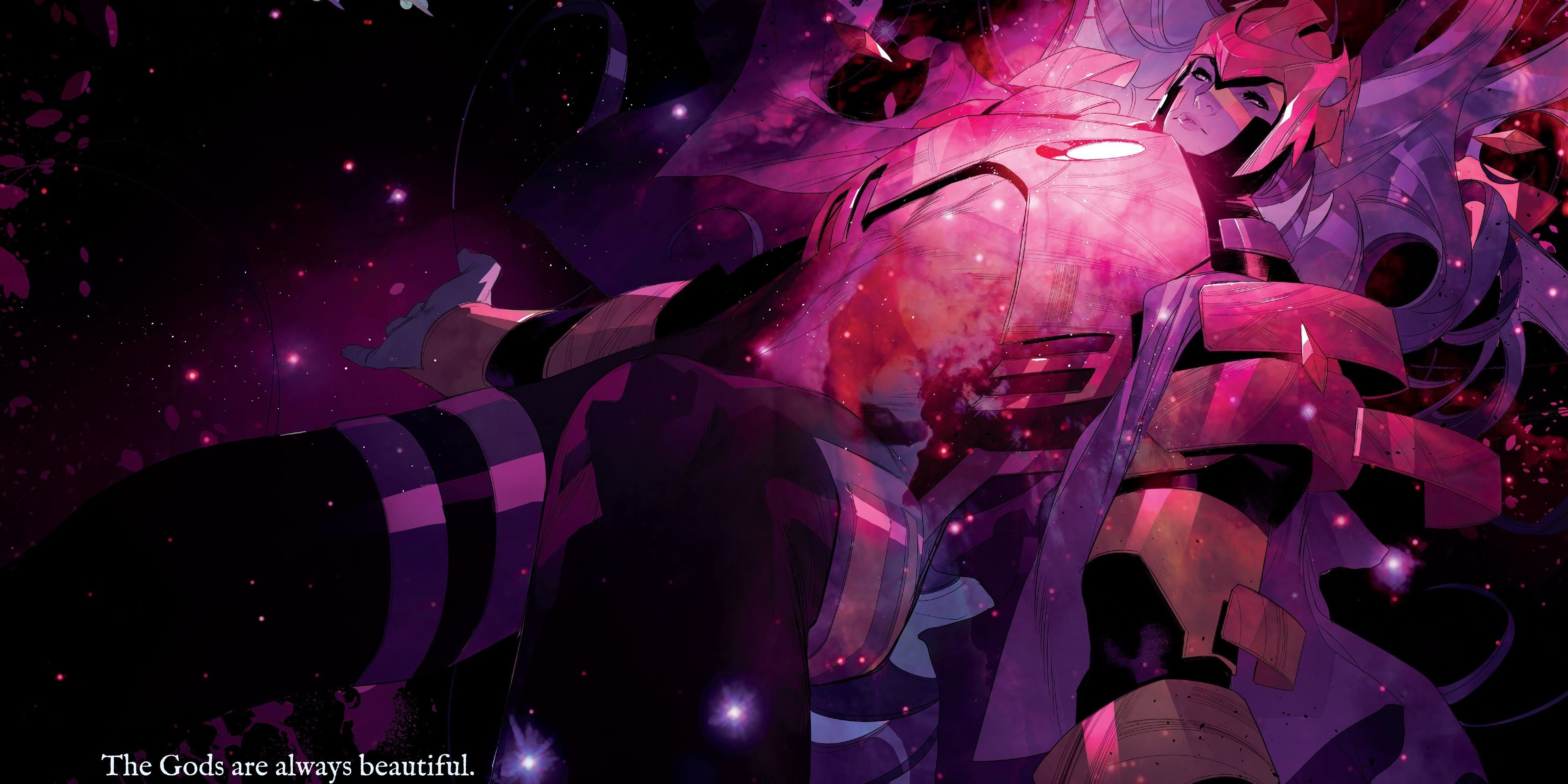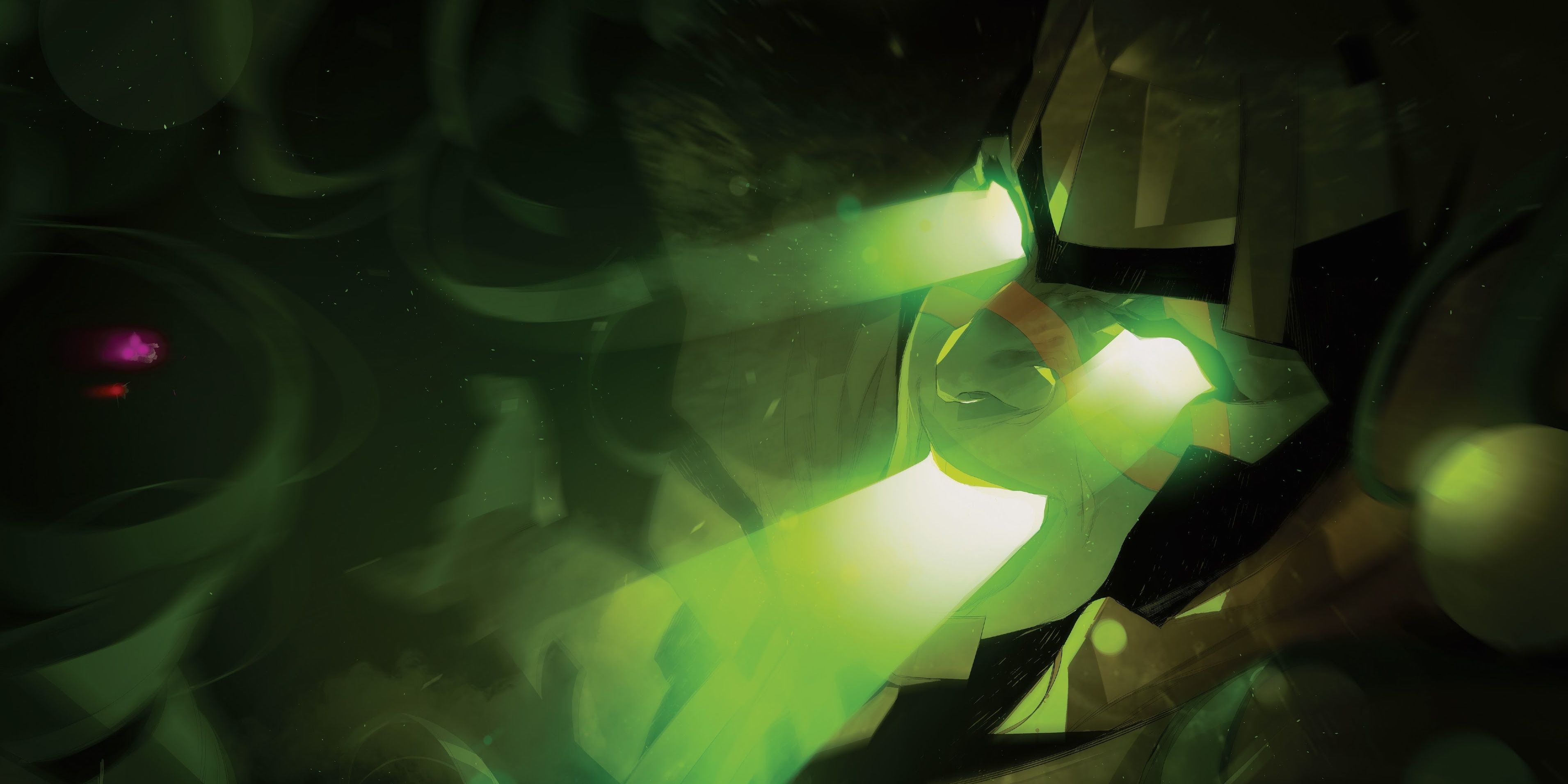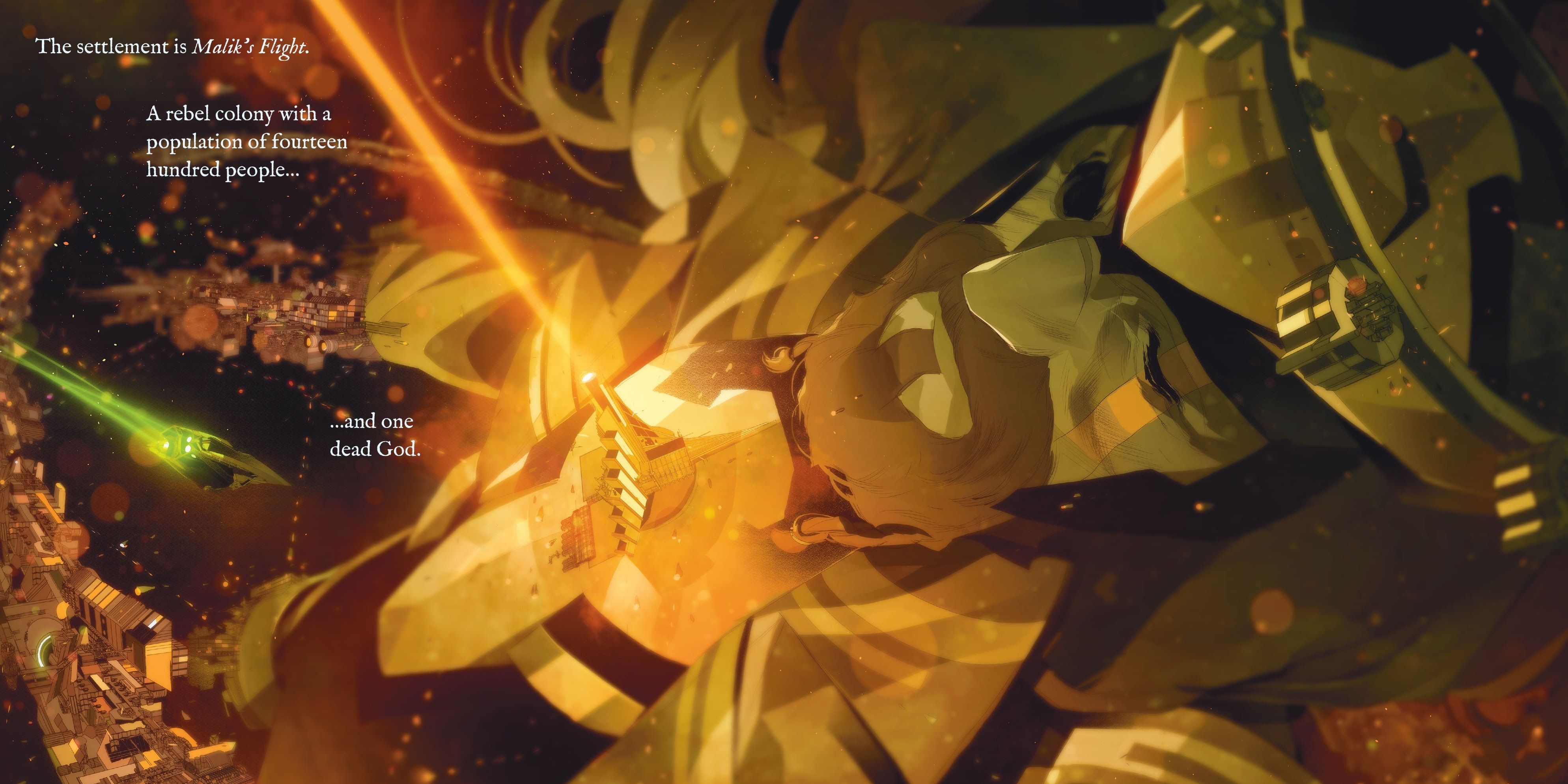With Al Ewing's Immortal Hulk officially over for about two months now, readers might be looking for a new existential story to sink their teeth into. Look no further than We Only Find Them When They're Dead (art by Simone Di Meo and Mariasara Miotti, with letters by AndWorld Design), a mecha-inspired space opera with grim religious themes.
We Only Find Them When They're Dead is an American comic that engages with the trends and practices of the western industry. However, there's a lot in the comic that's reminiscent of traditional mechsuit manga and anime. Crew members bark orders at each other in dynamic colorful shots, there's massive hulking humanoids with robot armor (that resemble Marvel's celestials or Galactus), but all of the pieces that would make up a Gundam or Evangelion arc have been rearranged in startling ways.
In the far future of the 24th century, humans fly in starship flocks like vultures, seeking out giant humanoid gods that float in the vacuum of space. As the title of the book suggests, these gods are never found alive. Gods serve only as space-cattle, no matter how awe-inspiring their presence may be. Meat is carved from their tissue for food, bone is used to synthesize compounds and the crystal of their glowing white hearts is salvaged for AI technology. But although this lifestyle is more or less sustainable, not everyone is happy with it.
The first arc of We Only Find Them When They're Dead follows the humans working aboard the Vihaan II. The crew of this ship has had enough with the dead gods, and they begin a quest to search the cosmos for a living one. Space police aren't kind to stragglers, so the conflict that follows their journey is fast-paced and anxiety-inducing. When they get their wish, uncovering a god that's breathing and screaming, the fate of the universe is changed forever.
What separates We Only Find Them When They're Dead from most other comics on the market, and what might make the story a little hard to swallow for some, is the unique pace of the storytelling. Characters here come and go faster than Game of Thrones. This comic is focused on telling a generational tale, one which currently spans just under a century.
Unlike a typical story centered around a protagonist or even a group of protagonists, Ewing focuses the narrative around the entirety of the human species. These gargantuan cosmic deities influence the changing tide of intergalactic culture, religion and politics, and it's fascinating to watch these events ripple throughout the decades in unforeseen ways.
Religion, though not entirely present in the first five issues, is quickly developing into the primary focus of the comic. When the crew of the Vihaan II unveil their footage of a living god to the rest of humanity, fanatics begin a crusade to purge the universe of those who harvested god-flesh. As time moves on, even those of this faith fail to agree with each other. Half of these believers assert that all of humanity will have the capacity to ascend to godhood, while the other half believe Malik, the protagonist of the comic's opening issues, is the one true God.
We Only Find Them When They're Dead allows the reader to view the evolution of humankind from a near-omniscient lens. It asks the audience to examine where beliefs originate, how they develop over time, and whether or not history can ever truly be preserved. Though not exactly a compelling character drama, it pushes the boundaries of plot in comic books in ways that many might not be ready for. If any of this premise sounds engaging, issue #10 is expected to hit comic shop shelves on January 19th, so consider picking it up.




